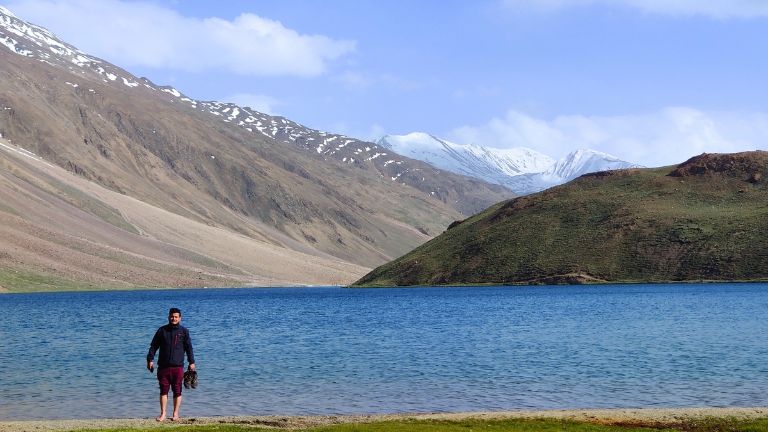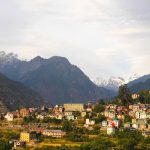Himachal Pradesh, renowned for its untouched beauty, would provide travelers with a plethora of options when making a list of the places they must see while there. But the lakes in Himachal Pradesh are stunning and unquestionably noteworthy. The lakes are surrounded by tall hills and beautiful green meadows. The water in the lakes is a bright turquoise color.
The lakes in Himachal Pradesh are serene, reflective, and dazzling, and even have flowers growing along their shores. While the others are man-made reservoirs and basins that are surrounded by nature, the majority of the lakes are situated at high elevations and offer breathtaking vistas of the Himalayan Mountains. In total, Himachal has more than 25 lakes and reservoirs. During the summer, the majority of Himachal Pradesh’s lakes are completely full.
The busy Indian state is home to hundreds of picture-perfect lakes in Himachal Pradesh that are just waiting to be discovered. Each lake offers a different selection of entertaining activities, such as boating, fishing, swimming, and sightseeing excursions. A variety of cultural landmarks, including historic museums, picturesque public gardens, and medieval churches, can be found in lakeside resorts, villages, and cities. No trip to Himachal Pradesh is complete without visiting some of the state’s most remarkable lakes, no matter where your travels lead you.
- Brighu ( 4325 m & Trek from Rohtang Pass)
- Chakund Lake (3062 m & on the other side of Panj Ungal Peak)
- Chamera Lake ( 25 km from Dalhousie)
- Chander Nahan ( 4260m)
- Chandertal ( 4270 m & 13 km Batal)
- Dal Lake (1775 m & 11 km from Dharamshala)
- Dashaur Lake ( 4200 m & 6 Km from West of Rohtang Pass
- Ghadhasaru (3470 m & 24 km from Tissa-Chamba)
- Gobin Sagar Lake
- Kamru Nag (3300 m & 42 km from Chindi)
- Kara Lake ( 3566m)
- Kareri (1810 m & 35 km from Dharamshala)
- Khajjiar (1951 m & 26 km from Chamba)
- Kundi Maral Lake (3750 m)
- Khajund Lake (2400 m & 14km from Chamba)
- Lama Dal (3960 m & 45 km from Chamba)
- Macchial Lake (8 km from Jogindernagar)
- Maharana Pratab Sagar Lake
- Manimahesh (4183 m & 98 km from Chamba)
- Nako ( 2950 m & 117 Km from Kalpa)
- Pandoh Lake
- Prashar (2730 m & 40 km from Mandi)
- Renuka Lake (660 meters & 37 km from Nahan)
- Rewalsar (1350m & 24 Km from Mandi)
- Sapona Lake (4114 m)
- Sissu Lake (3130m & 39km from Manali)
- Sereolsar (3470 m & 24 km from Ani – Near Jalori Pass)
- Surajtal (4880 m & 82 km from Keylong)
- Tani Jubbar Lake ( 12 km from Narkanda)
- F&Q’s Lakes in Himachal Pradesh
Brighu ( 4325 m & Trek from Rohtang Pass)
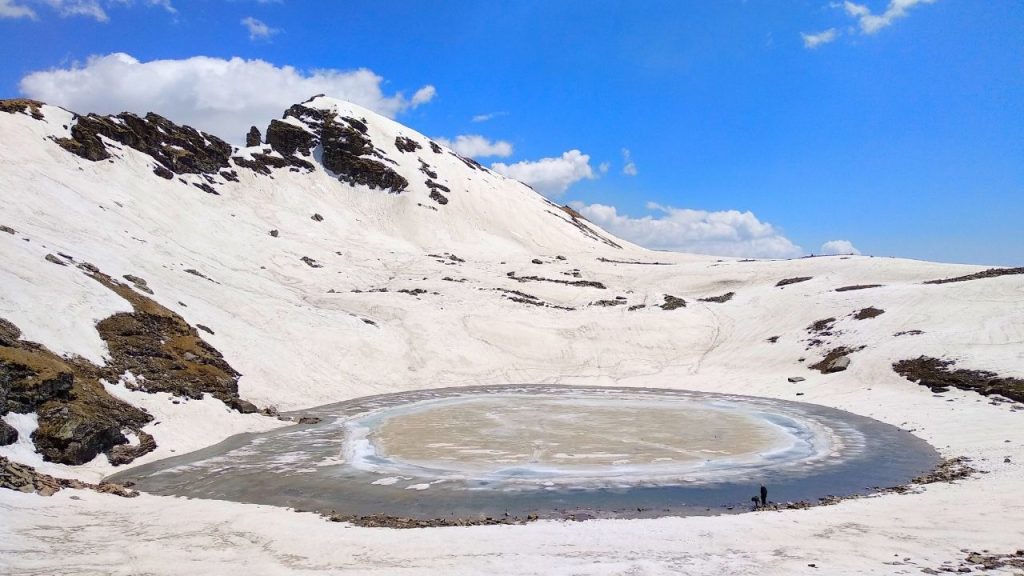
Bhrigu lake is one of the attractive lakes in Himachal Pradesh. Lake walk is popular among hikers because of the lake’s rich mythology. This walk can be reached via Gulaba, which is located in Himachal Pradesh about 20 kilometres north of Manali. It is well-known for being the spot where the revered saint Maharishi Bhrigu meditated. We do think that the walk offers more than just the lake, though.
The grasslands of the Bhrigu Lake trip are a must-do. In our nation, it often takes at least a day or two of hiking inside the treeline to reach an alpine meadow. Two or three days of arduous ascent are involved. This is because the majority of alpine meadows begin at a height of about 11,000 feet above the treeline.
However, within the first 10 minutes of this trip, you are in the meadows! Imagine having beautiful pastures in your own backyard. It makes sense why we are so enamoured with the scenery found in locations like Switzerland.
Chakund Lake (3062 m & on the other side of Panj Ungal Peak)
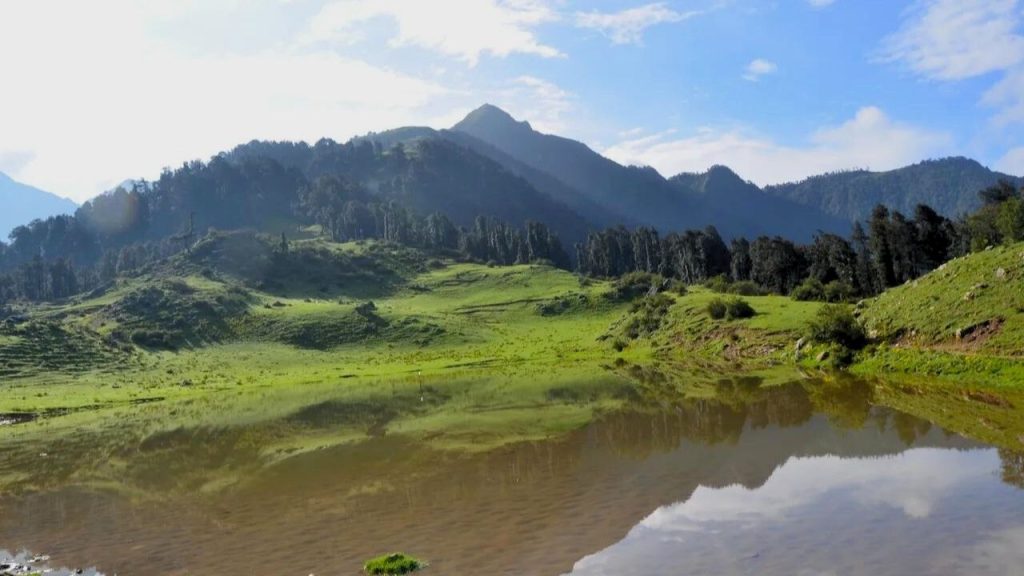
Close to Khajund lake, Chakund lake is on the other side of Panj Ungal Peak. From the snow-covered peaks of this mountain, the lake takes birth. The backdrop for the lake is nothing less than the majestic Pir Panjal Range. This lakes in Himachal Pradesh will get forward to you. A well-defined trek takes you from Kiri Village between Saho and Chamba to Chakund Lake. The track is a very steep incline, and at 3062 meters, it is worth the effort From Kiri to the lake, it is a hard trek of 11 km.
Chamera Lake ( 25 km from Dalhousie)
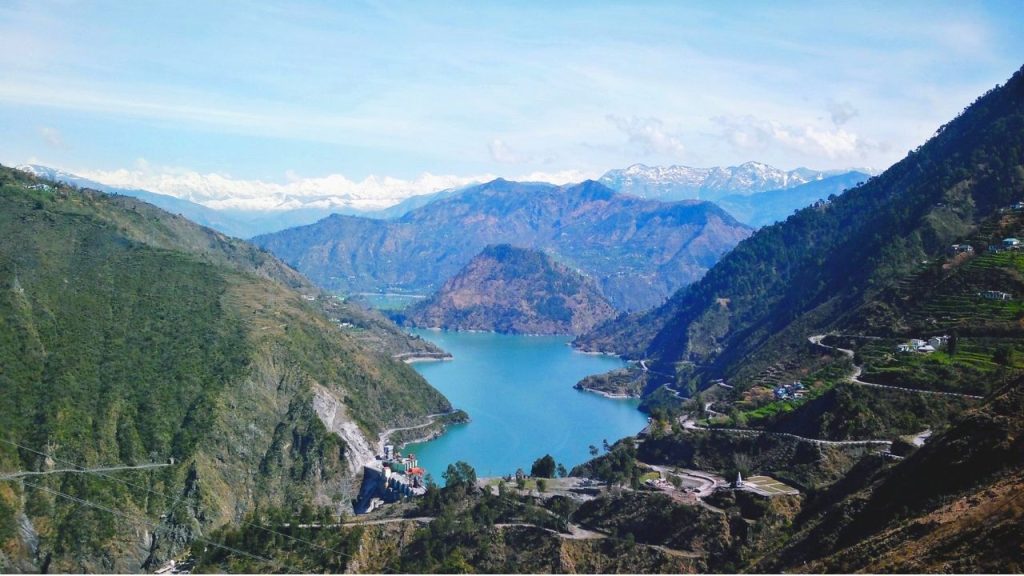
The Chamera Lake, another breathtakingly stunning man-made lakes in Himachal Pradesh, is tucked away in the charming Chamba Valley. The lake, which is 25 kilometers from Dalhousie, was built by the and is a well-known Chamera dam on the Ravi River. With boating and fishing available, the emerald green surroundings have enough to keep action seekers busy. The picturesque lake, which provides irrigation for the villages, is also conveniently located.
Chander Nahan ( 4260m)
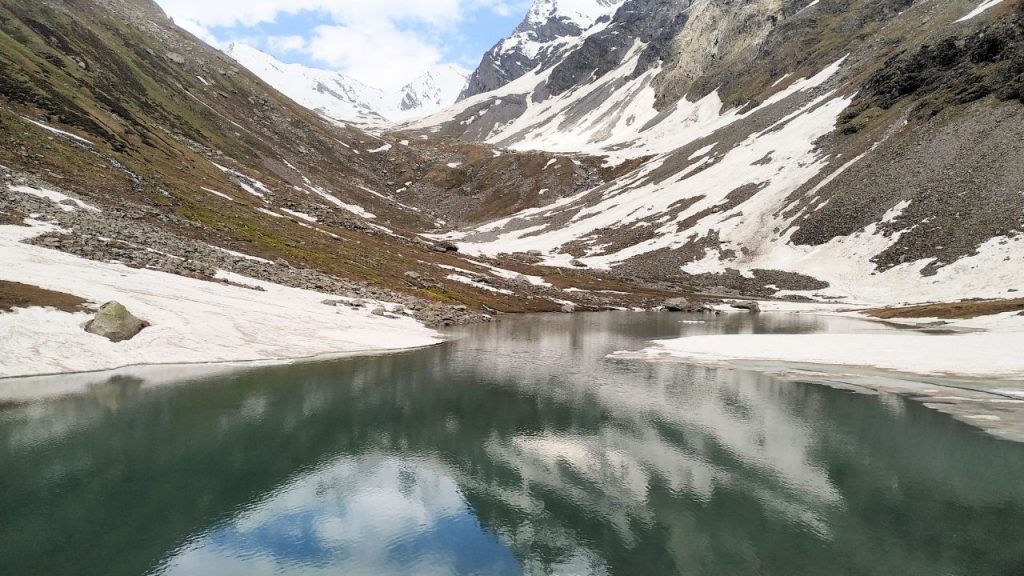
Chandra Naun, a lake at a high elevation, is also known as Chandernahan Lake. It is one of the famous lakes in Himachal Pradesh The lake, which is located in the Chanshal range of the Shimla district, feeds the Pabbar river and receives its own water from the surrounding peaks’ melting snow. The elevation is 4260 meters above sea level, and skilled hikers can get there.
Chandertal ( 4270 m & 13 km Batal)
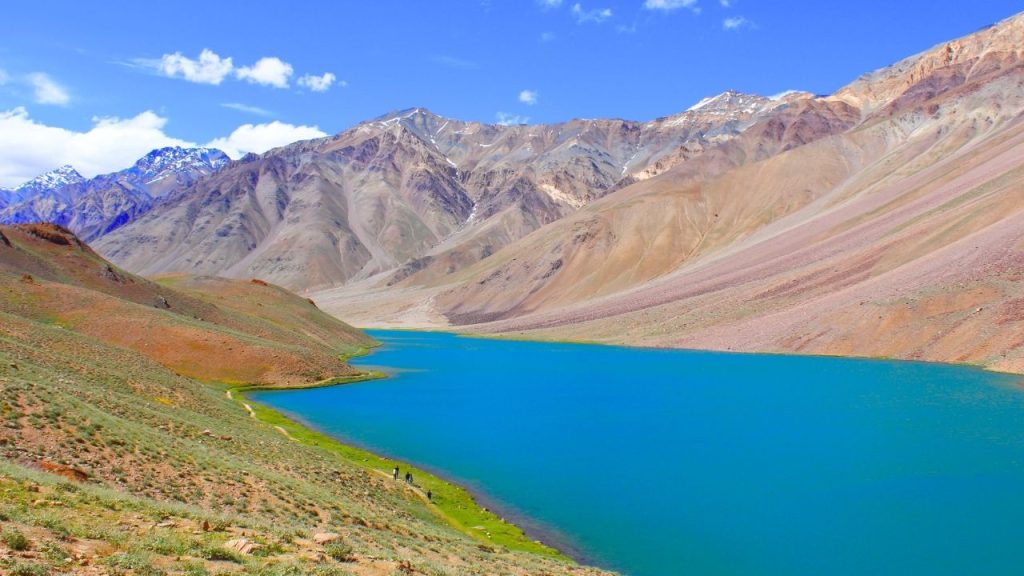
One of the most beautiful lakes in Himachal Pradesh you will ever see is Chandra Tal, which is located between Lahaul and Spiti, just 6 km from Kunzum Pass. The Chandra River supplies water to the 2.5 km-long, vivid blue lake. The lake, which is shaped like a crescent moon, is encircled by the snow-covered Himalayas, which are 4337 metres high. It is only accessible during the summer because it is frozen throughout the winter and bordered by heavily snowed-in areas. Locals think that fairies visit the lake at night and that the water’s hues change with the sky. Additionally, this is where the challenging Batal-Chandratal Lake Baralachala Trek begins.
Dal Lake (1775 m & 11 km from Dharamshala)
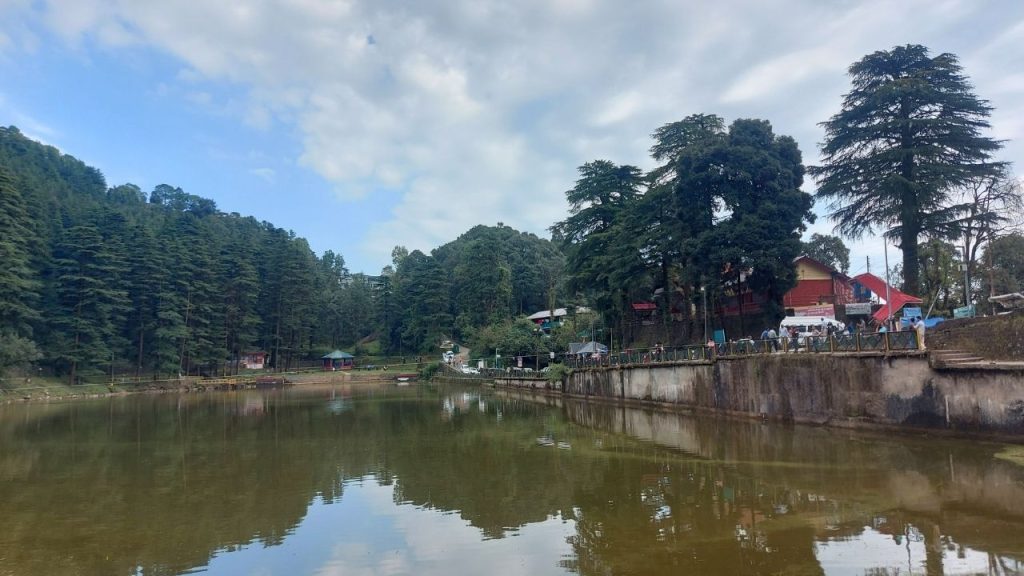
The numerous deodar trees that surround the tranquil Dal Lake, which is located in the Kangra district, 11 km from Dharamshala, add to its allure. On the shore of the emerald-colored lake lies a Shiva shrine that is frequently visited by worshippers. It’s the ideal location for a picnic as well, given the stunning mountain views around it.
Dashaur Lake ( 4200 m & 6 Km from West of Rohtang Pass
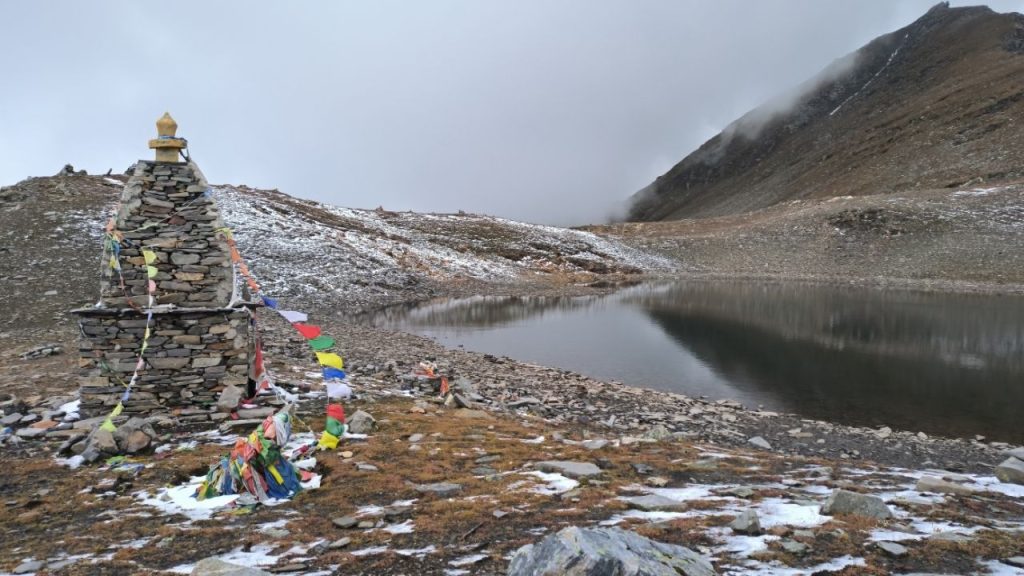
The height of the Dashaur Lake is 4200 metres. It lies approximately 6 kilometres to the west of Rohtang Top and has the Pir Panjals to the north and the Dhauladhars to the south. The route that begins at Rohtang Pass is the shorter and more difficult one, whereas the milder route begins at Rani Nullah, two kilometres before Rohtang Top. Pilgrims dip in its crystal-clear waters in August, during the Hindu month of Bhadon. The Ghepan Goh and Hanuman Tibba are on either side of it. Along with Ghepan Goh and Hanuman Tibba, which appear to be nearby, you can get a glimpse of some of the trek’s most imposing peaks, like the Deo Tibba and Indrasan. The lake is frozen over throughout the winter months, but when the snow melts, its stunning blue colour emerges.
Ghadhasaru (3470 m & 24 km from Tissa-Chamba)
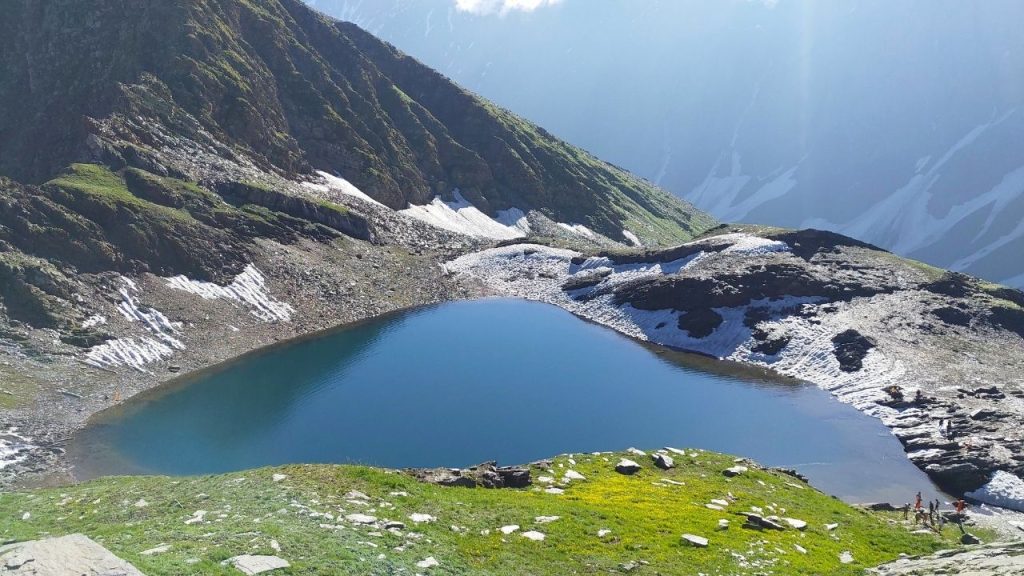
The stunning Ghadhasaru lake is located in the Churah tehsil of Chamba, 24 kilometres from Tissa. It has a radius of nearly a kilometre and is located 3470 metres above sea level. There is a Kali Temple close to the holy lake. After making this difficult journey, pilgrims come to this shrine to ask for blessings. The stunning surroundings make it worthwhile.
Gobin Sagar Lake
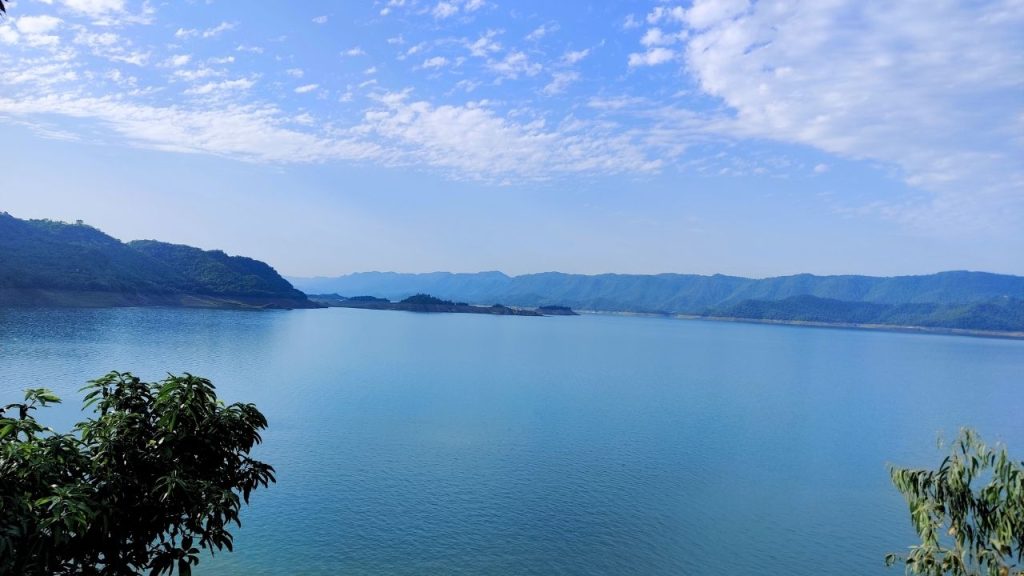
It is a sizable lake that was formed as a result of the Sutlej River’s Bhakra Dam construction. The majority of the 170 sq. km. reservoir, which is 90 km long and 70 km wide, is located near Bilaspur. It is one of the tallest gravity dams in the world and is named after the tenth Sikh Guru, Gobind Singh. When it was first constructed, it served as a water fowl refuge and continues to provide a broad variety of birds. There are many different species of fish in this area, and even the aquatic life is diverse. On ferries and speedboats on the lake, you can have fun.
Kamru Nag (3300 m & 42 km from Chindi)
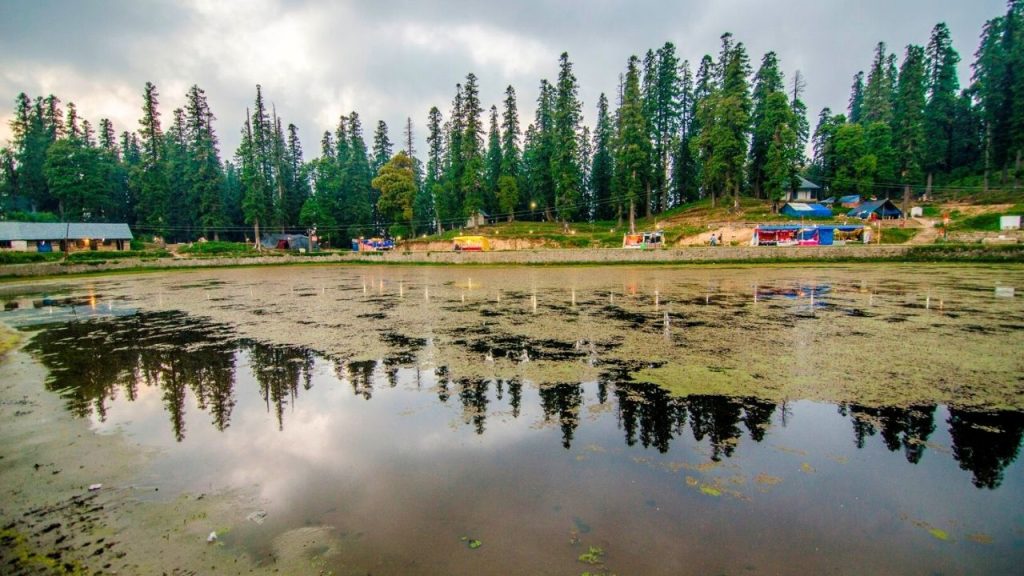
The Kamrunag Lake, a venerated body of water, is dedicated to Kamrunag Devta, the god of rain. It is encircled by substantial woodlands and is situated in the Mandi village of Kamrah. Devotees flock to the lake and pay their homage to the deity during a three-day fair that takes place every June. The gifts include jewellery, coins, and bills of exchange. These have been accumulating in the lake for centuries but are never reclaimed. Yakshas are claimed to have once resided in the area, and Kamrunag Devta is mentioned in the Mahabharata epic. He was forced to make do with seeing the entire battle, despite his desire to participate in the heated conflict.
Kara Lake ( 3566m)

At the foot of the Bhawa in the Bhaws Valley, Kara Lake is situated at a height of 3566 metres. Trek to the lake in the midst of a beautiful valley filled with picture-perfect meadows and woodlands, passing through the fields of Mulling and the fields of Mastrang, before arriving at the stark lunar scenery of Spiti. The contrast in the scenery provides a visual treat.
The trek to the lake itself takes around two days, yet it is so captivating that the experience lingers with you like a beautiful memory. Start at Kafnu Village and take in the lush flora, extensive glacier stretches, dramatic rock walls, and more. One option is to stay at a guesthouse along the route. The best months to visit the lake are between April and June, and the trek’s difficulty rating is moderate.
Kareri (1810 m & 35 km from Dharamshala)
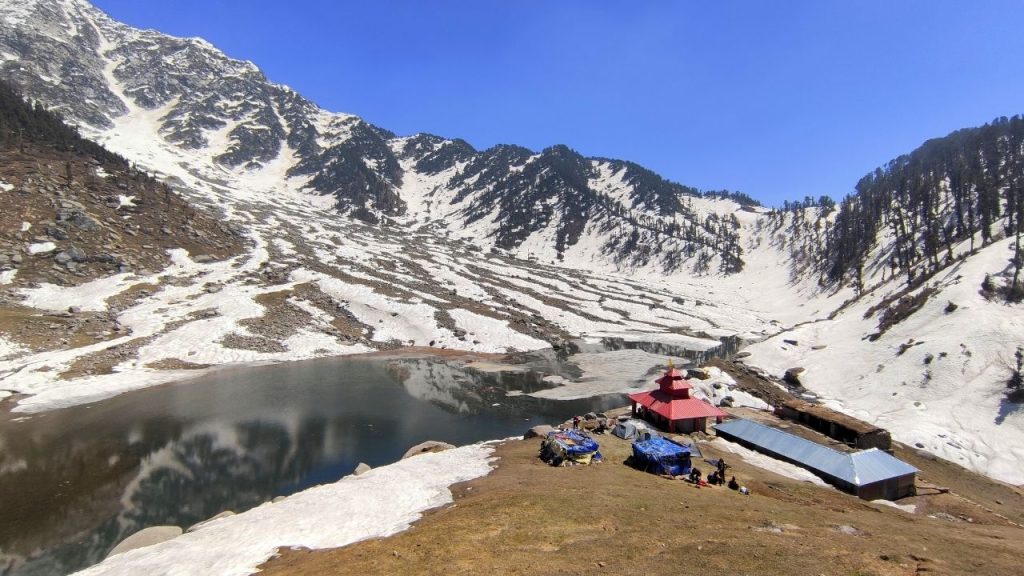
Kara Lake is situated in the Bhaws Valley near the Bhawa at a height of 3566 metres. Trek to the lake in the midst of the beautiful valley’s picture-perfect meadows and woodlands, passing through the crop fields of Mastrang and the confi forests, then through the fields of Mulling, before arriving at the stark lunar scenery of Spiti. A visual treat results from the contrast in the landscapes. The trek takes around two days to complete, yet it is so captivating that you will always remember it as a beautiful memory. Begin at Kafnu Village and take in the sights of everything, including lush vegetation, glacier ice fields, massive rock faces, and more. A guesthouse along the route is an option for accommodation. The optimum time to visit the lake is between April and June, and the walk is of moderate difficulty.
Khajjiar (1951 m & 26 km from Chamba)
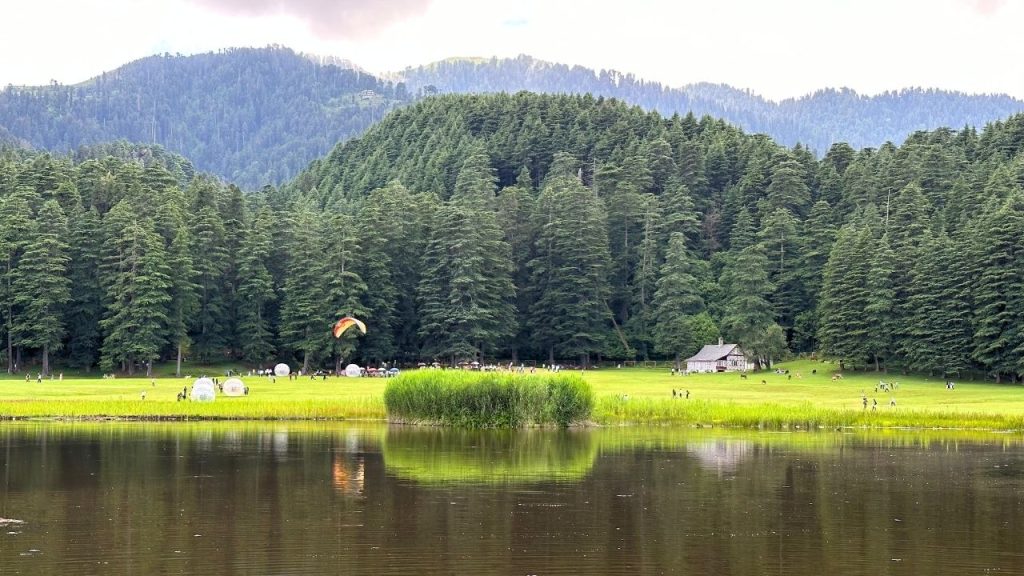
The most magnificent lake is Khajjiar Lake, which is shaded by the snow-covered Himalayas. The lake, which is surrounded by a cedar forest, is situated at a height of 1920 metres. The Khajjiar Lake receives its water from the little Himalayan streams. The Khajinag temple, which has exquisite wood carvings and a gilded dome, is another place that may be visited. The lake is a well-known tourist destination in Khajjiar where visitors can engage in a variety of leisure activities or simply take in the natural beauty of the surroundings. The location is ideal for taking some time alone away from the rush of the modern crowd. Visitors can find tranquilly and quiet there.
The legends have a close connection to Khajjiar Lake. There is no other spot in the world like the lake, which is a paradise in itself. Visitors can marvel at the breathtaking view of Mount Kailash from the Khajjiar Lake on a clear, sunny day. The floating island, which is actually a collection of grass and weeds growing on the lake’s surface, is what draws most people to the lake.
Kundi Maral Lake (3750 m)
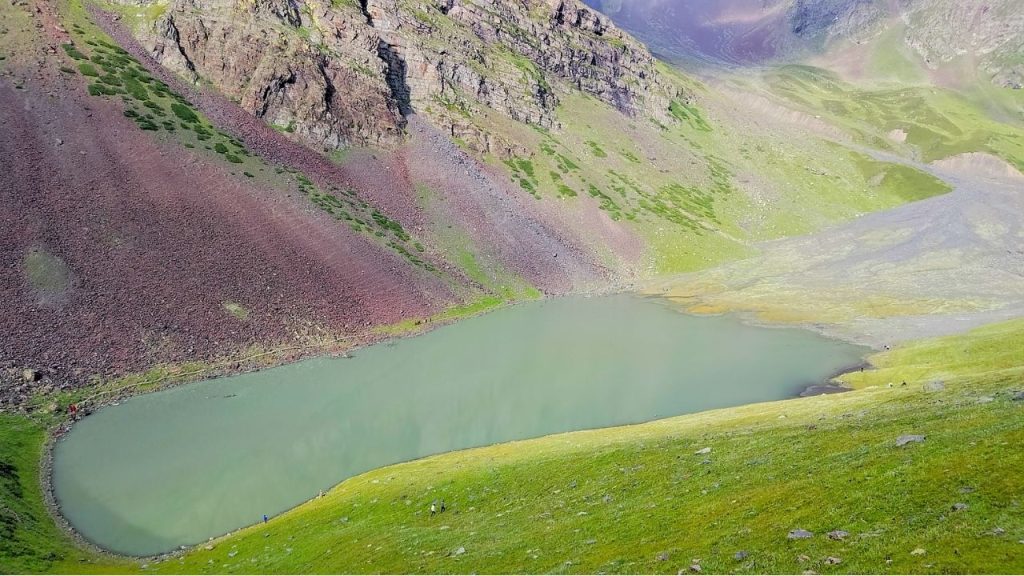
The Khundi Mara Lake is situated in a lush pasture in the Churah tehsil of Chamba, at a height of 3750 metres. It has a 3000 sq m area and is accessible from all sides. From Chamba through Saho, Chajju through Churah, and Bharmour through Lith, you can hike to the lake. According to folklore, Goddess Mahakali came from this lake by splitting a rock, hence the lake is dedicated to her. A large flock of sheep grazing nearby is also said to belong to the Goddess.
Khajund Lake (2400 m & 14km from Chamba)
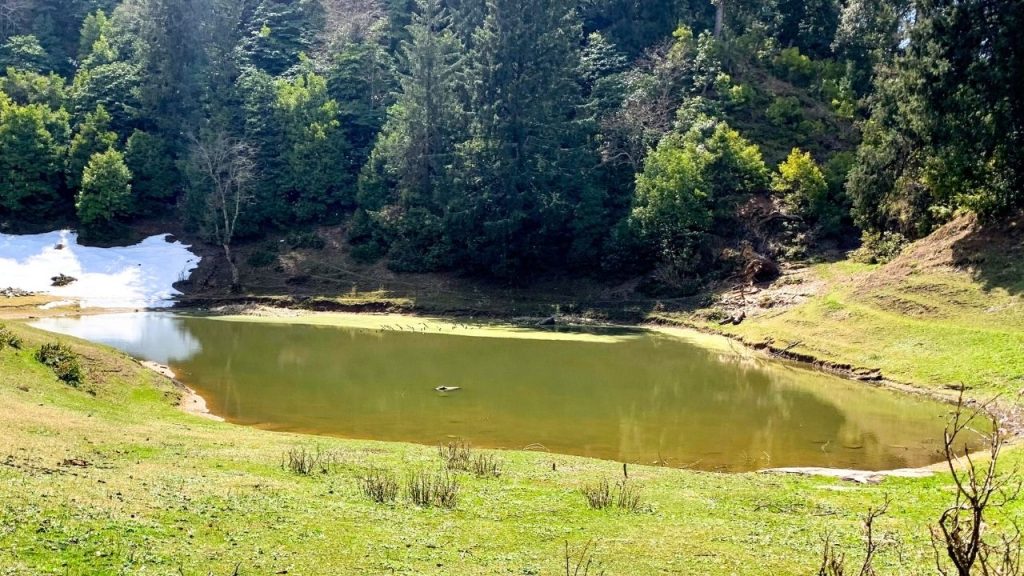
Few people are aware of the Khajund lake, which is situated at a height of 2400 metres. Saho village is 14 kilometres from Chamba. The Panch Ungal peak, also known as the five-finger peak, is hidden below the lake. One must journey through dense woods filled with wild creatures to get to the water. Therefore, it is advised to travel in groups or, at the very least, have a companion. Basic homestays are available in the village of Bhala where the trip begins, but you must stay in Chamba if you want to stay in a hotel.
Lama Dal (3960 m & 45 km from Chamba)
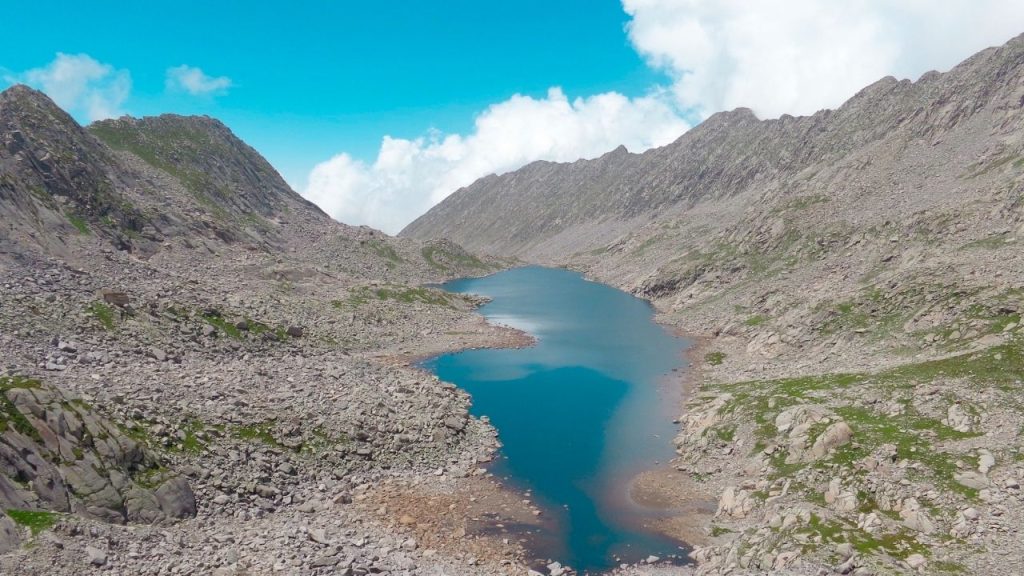
The Lama Dal, which is in the Chamba district and is situated at 3900 metres, is the biggest and deepest lake in the area. The lake’s name, Lama (or Lamba, pronounced Lama by the locals), means “long, long lake” and refers to its 2.5 km circumference. Every year, they make a trip to the lake, which is revered by followers of Lord Shiva. It is a moderate to difficult trekking trail that is close to the Balani Pass and is surrounded by desolate cliffs. You can drive up to Ghera and continue your journey from Chamba, which is 45 kilometres from the lake. Along with some water activities, the lake includes a Shiva Temple nearby.
Macchial Lake (8 km from Jogindernagar)
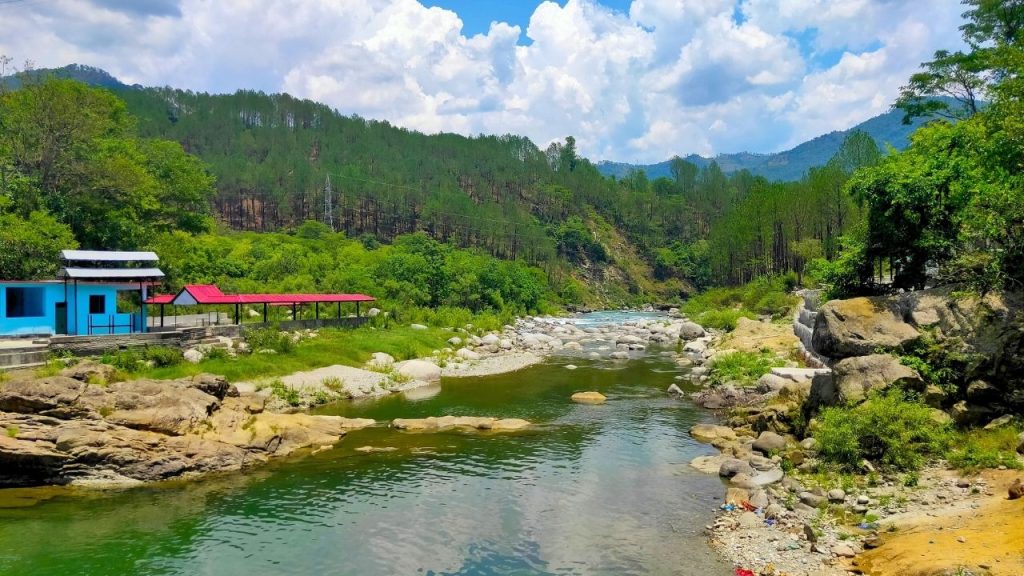
The Matsya Avtaar, also known as the Fish Form of Lord Vishnu, inspired the name of this low-altitude lake in the Mandi district. About 8 kilometres away from Jogindernagar is a holy lake. The first mahseer fish farm in India is just a short distance away. The holy lake offers to grant desires and bestow blessings on devotees. Those that had their desires fulfilled would subsequently present the Golden Mahseer in the lake with nose rings. There used to be plenty of Mahseers with gold nose rings, but these days it’s much less prevalent. The lake is not a good place to fish because it has religious significance and is surrounded by high mountains.
Maharana Pratab Sagar Lake
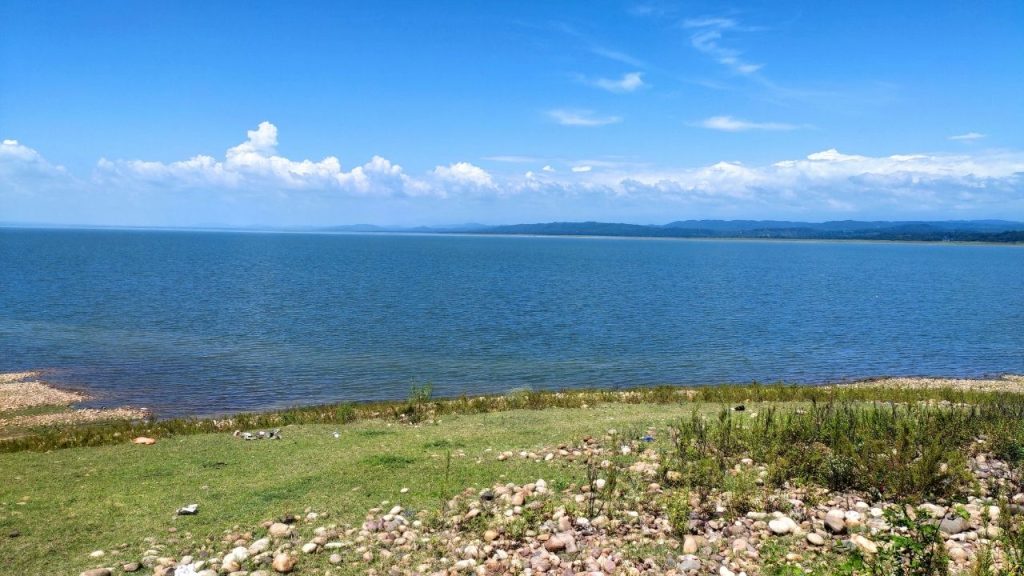
The Maharana Pratap Sagar Lake, also known as the Pong Reservoir or the Pong Dam Lake, is situated in the Kangra district. The area, one of the 27 internationally designated wetland sites by the Ramsar Convention, is also well-known for its wildlife sanctuaries. The lake is a reservoir made by the Beas river dam, and it is surrounded by the Dahuladhar mountains. The huge variety of trees; the profusion of waterfowl; the amazing variety of birds; and so forth. This is a very lovely experience, made even more so by the plants, grass, fruits, and flowers that are present. The lake is renowned for having excellent mackerel fishing. If you enjoy water sports, the lake offers training in basic, intermediate, and advanced levels at the local water sports center, in addition to experience. The well-known temples of Dadasiba, Masroor, and Bathu are situated within the lake’s marshes. The months of November through March are ideal for watching birds. The lake is easily accessible by road and is approximately 170 kilometres from Chandigarh.
Manimahesh (4183 m & 98 km from Chamba)
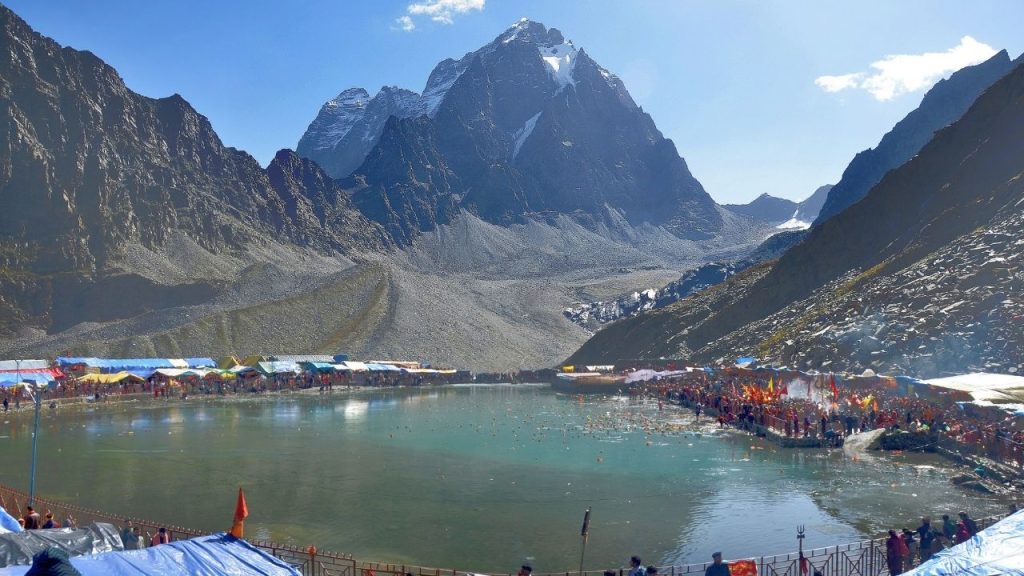
It is a high-altitude lake in the Chamba subdivision of Bharmour that is located at 4080 metres. For devotees, it is regarded highly and is comparable to Lake Mansarovar. Devotees travel to the lake on a pilgrimage every year on the eighth day of the new moon in the Hindu month of Bhadon, or in August or September.
The Manimahesh Ganga, or Budhil river, is its source. With flowers and foliage all around it, it creates a stunning vista as it is tucked away among tall mountains. based on mythology. Here, Lord Shiva and his bride Parvati resided, and for many centuries, he carried out severe penance on the peak. His matted hair sprouted a lake of liquid. The lake is divided into two areas: the portion with warm water, protected by bushes, is known as “Gauri Kund” or Parvati’s bathing area, while the area with cold water is known as “Shiva Karotr” or Shiva’s bathing place.
Nako ( 2950 m & 117 Km from Kalpa)
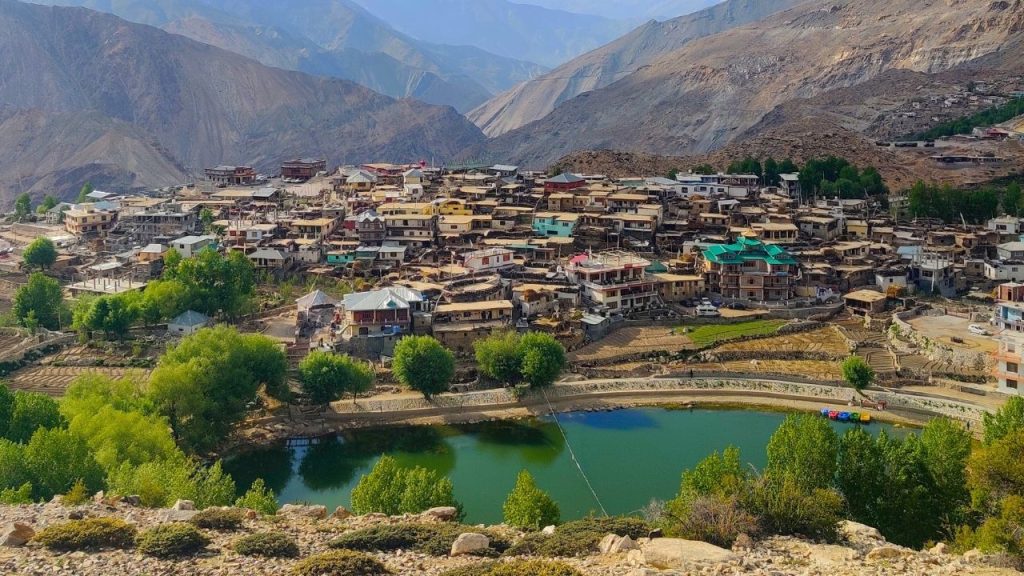
Himachal Pradesh’s Kinnaur region is stunning, but the undiscovered Nako is even more lovely. The Nako Lake is situated in Kinnaur’s Pooh Subdivision at a height of 3662 metres. The settlement of Nako is located on the lake’s edge and is encircled by the region’s typical rocky, mountainous landscape. The lake is a serene scene surrounded by snow-capped peaks. As you ascend, you may see fantastic views of the village and lake combined. About a 5-hour trip separates Recong Peo and the lake. It is surrounded by trees, making it a popular place for both those who love the outdoors and those who are spiritually inclined. There are four Buddhist temples nearby, and another one is supposed to contain Padmasambhava’s footprint. Being so close to such holy locations, the lake itself is regarded as a sacred place for Buddhists. A temple dedicated to him is located by the lake. People honour what they believe to be the footsteps of these divine beings in one of the hollows of a nearby waterfall with milky water, which is venerated as the mystical location of fairies.
Pandoh Lake
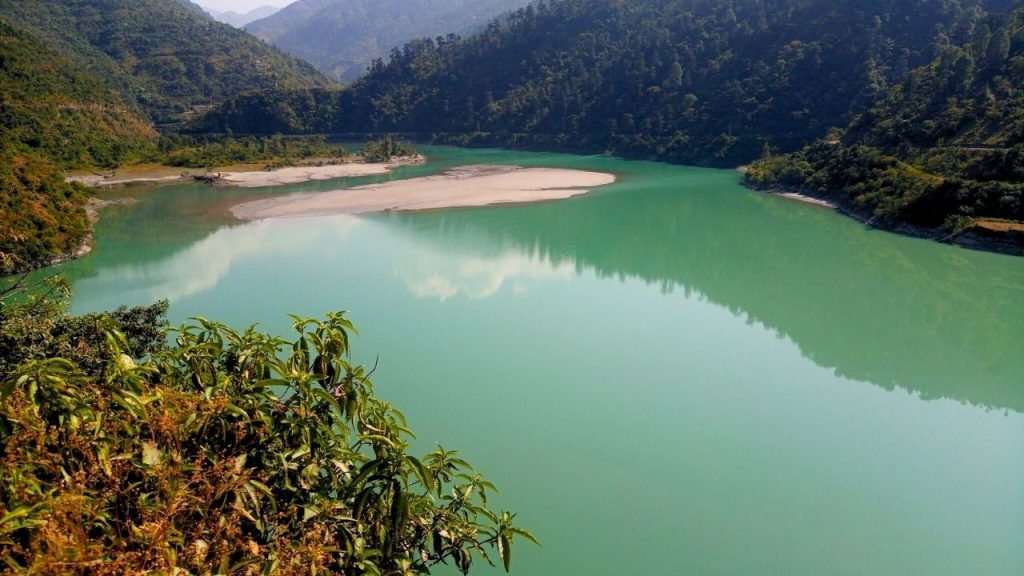
Pandoh Lake, which is unmistakable as you go across it along NH21 to get to Kullu and Mariall, is located 19 kilometres from Mandi. The lake was created as a result of the dam that was constructed to produce energy from the powerful Beas river. Even better, take your family on a stroll while enjoying a picnic.
Prashar (2730 m & 40 km from Mandi)
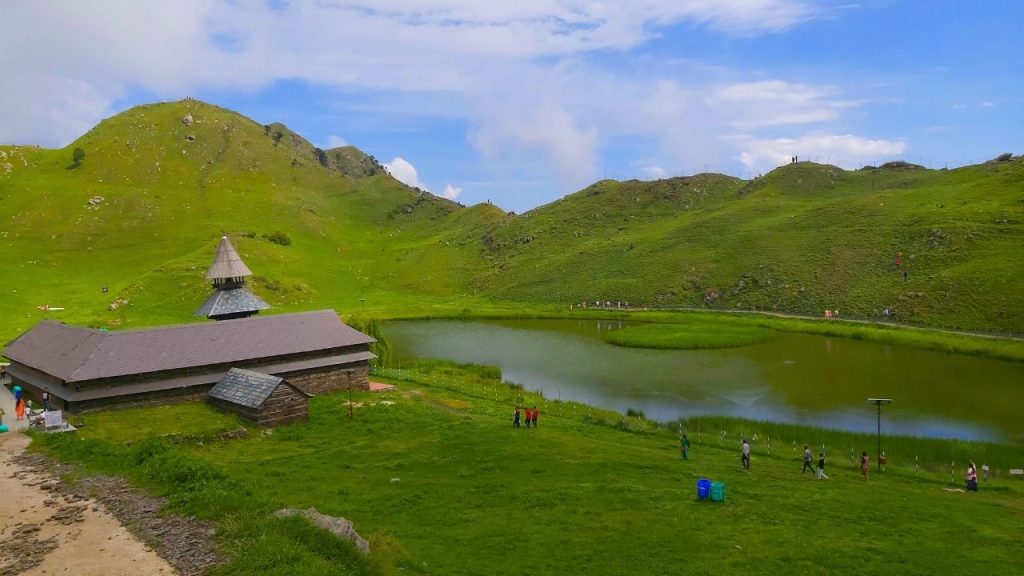
The Prashar Lake, another treasure in the Mandi area, is located 45 kilometres from Mandi town. There is also a three-tiered pagoda on the lake that is dedicated to the sage Prashar, who meditated here. The lake is a nice place for an outing, with Sutlej in the foreground and gorgeous mountains in the background. According to legend, the lake was formed when Bhim struck the mountain with his elbow and forearm, forming an oval. The lake is also known as a “bird’s eye” because, when viewed from above, it resembles one. The lake is frozen over all winter, making for an odd sight. You should travel to Mandi, which is connected to important cities, to get to the lake.
Renuka Lake (660 meters & 37 km from Nahan)
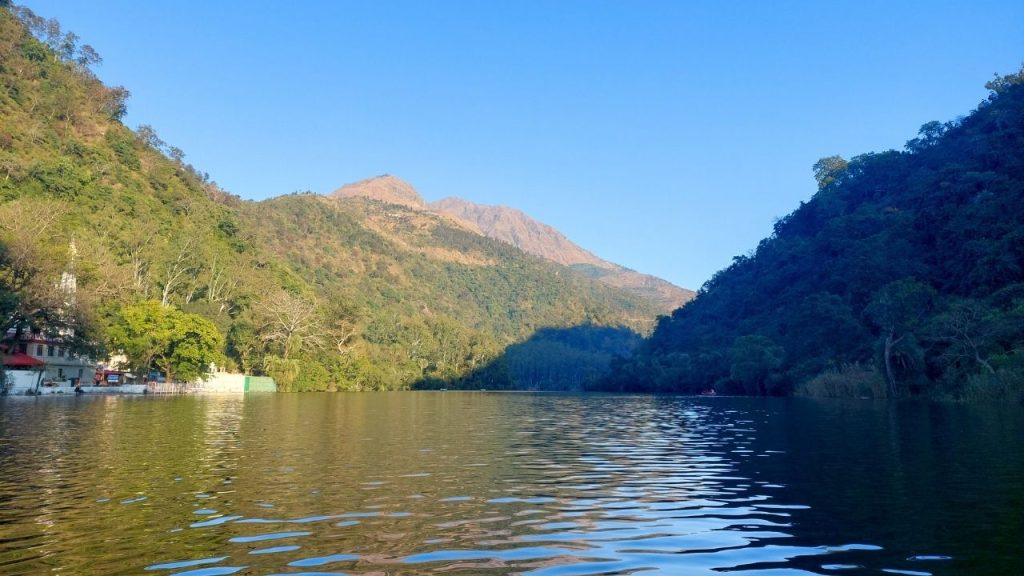
One of the more well-known lakes in Himachal Pradesh. It is Renuka Lake, which is located in the Sirmaur district and is 123 kilometers from Parwanoo. It is the biggest natural lake in Himachal Pradesh, measuring 3214m in circumference. It is a holy lake with a little lake at its base that is dedicated to Goddess Renuka’s son, Lord Parshurama. The lake bears her name. There is a temple dedicated to Lord Parshurama and another to Goddess Renuka. There is a myth about the Renuka temple that claims it was constructed in a single day.
The stunning lake is surrounded by mountains that are covered with rich vegetation. In addition to visiting a neighboring zoo, you may go boating here. With a wide variety of wildlife nearby, it is an excellent area to experience natural abundance.
Rewalsar (1350m & 24 Km from Mandi)
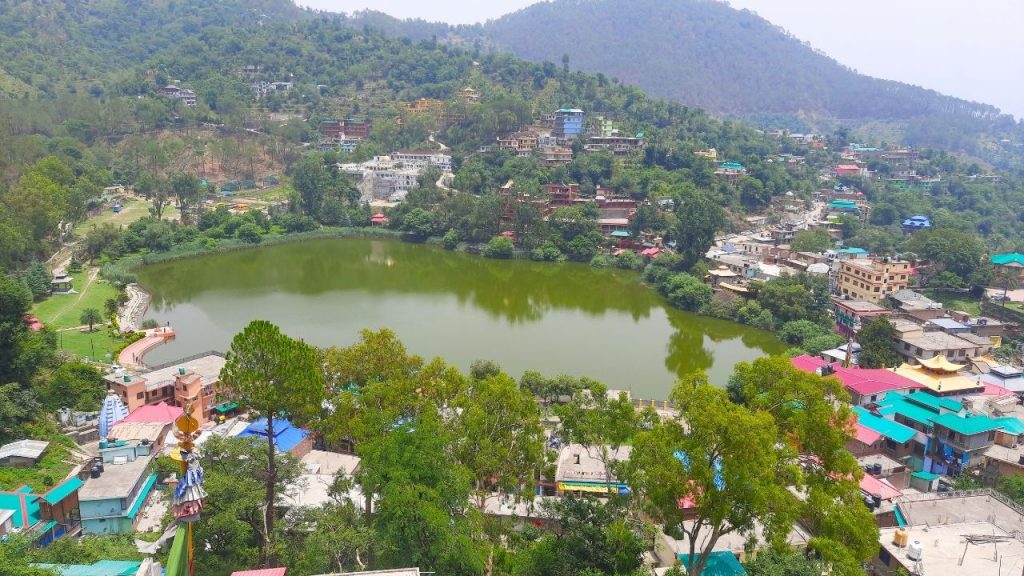
Rewalsar Lake may be found in the bizarre Mandi region. The virtually square lake is 735 metres in size and located 25 miles from Mandi town. The lakes in Himachal Pradesh unique quality is that Hindus hold it in high regard. Sikhs and Buddhists both.
Here, there are three temples honouring Lord Krishna, Lord Shiva, and Sage Lomas, a follower of Lord Shiva. Buddhists revere the lake because it is reported that Guru Rimpoche or Padmasambhava spent time there and because three monasteries may be found nearby. The location of Padmasambhava’s spirit is reported to be a floating reed mass in the lake. A gurudwara was constructed here after Guru Gobind Singh temporarily resided there, attracting Sikh believers. The Kunt Bhayo Lake is a different holy lake that is located above Rewalsar Lake.
Sapona Lake (4114 m)
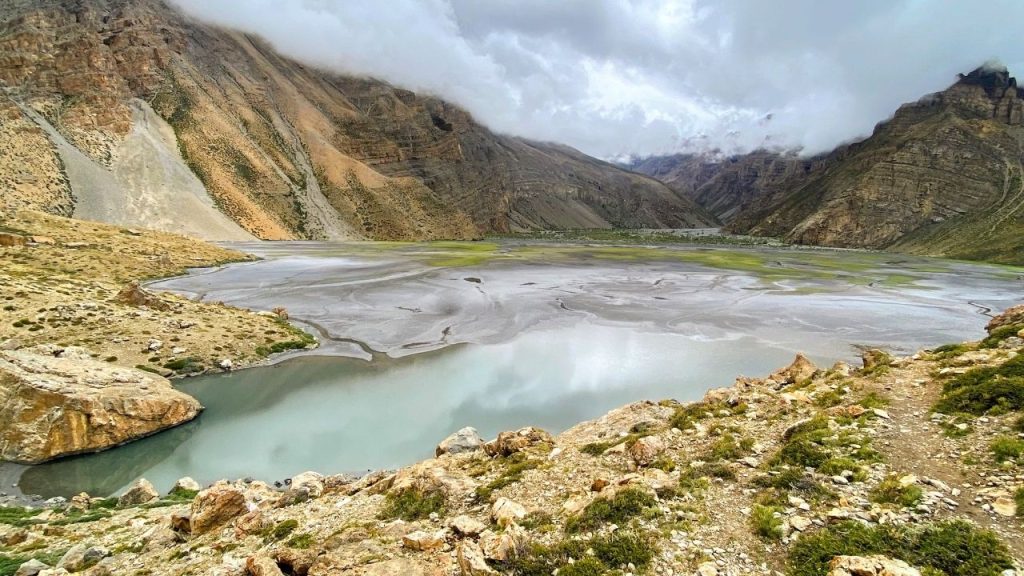
A seasonal lake fed by glacial melts, Sopona Lake at 13,500 feet is a delight. As it is glacial fed, the lake doesn’t have water all year round, but summers are the perfect time to visit it. One of the highest ranges in Himachal, the Manirang mountain range, feeds the lake with water that flows when the snow covering the mountains melts.
The lake is close to Mane, a small hamlet in the Spiti Valley, and In the list of lakes in Himachal Pradesh are rewards you with magnificent views of the entire valley. From the village, it is a 5 km trek that is tough for beginners The drive to Spiti and then onwards to Mane is in itself a vision to remember, and the trek upwards is even more mesmerising As the area is quite remote, you won’t find any hotels.
It is at endearing homestays that you can make yourself comfortable and discover the lifestyle of the locals.
Sissu Lake (3130m & 39km from Manali)
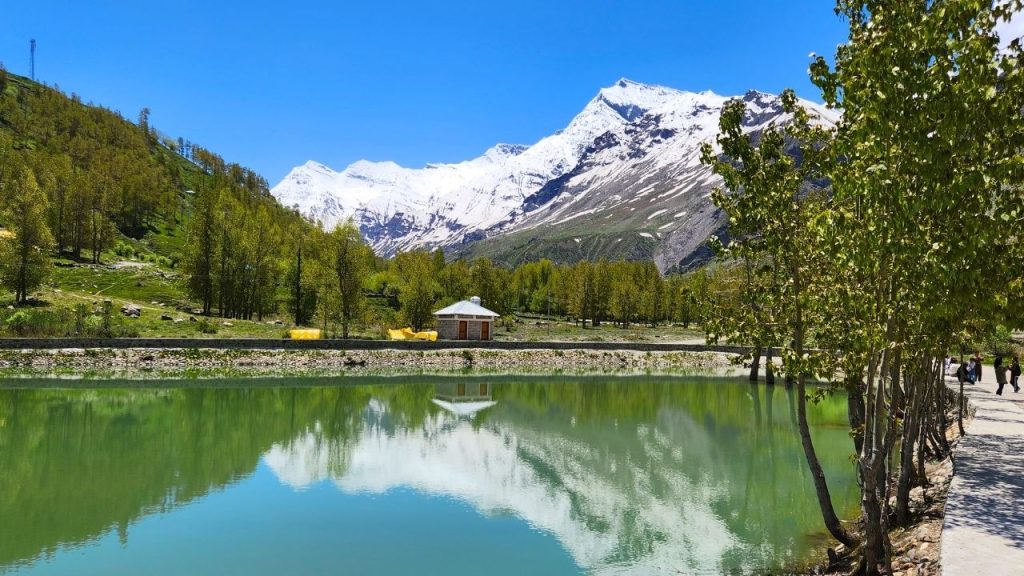
The stark Lahaul valley is home to Sissu village, from where the Sissu Lake is about a kilometre away. On the route to Keylong from Manali. The lake is surrounded by high mountains, as well as fields and pastures. The site is very good for camping as well. At 3130 m, the lake is a brilliant turquoise colour and is dotted with ice blocks floating in it. The lake is also called Ghepan Ghat. The trek to the lake is moderate and extremely beautiful. It is best approached between May and October.
Sereolsar (3470 m & 24 km from Ani – Near Jalori Pass)
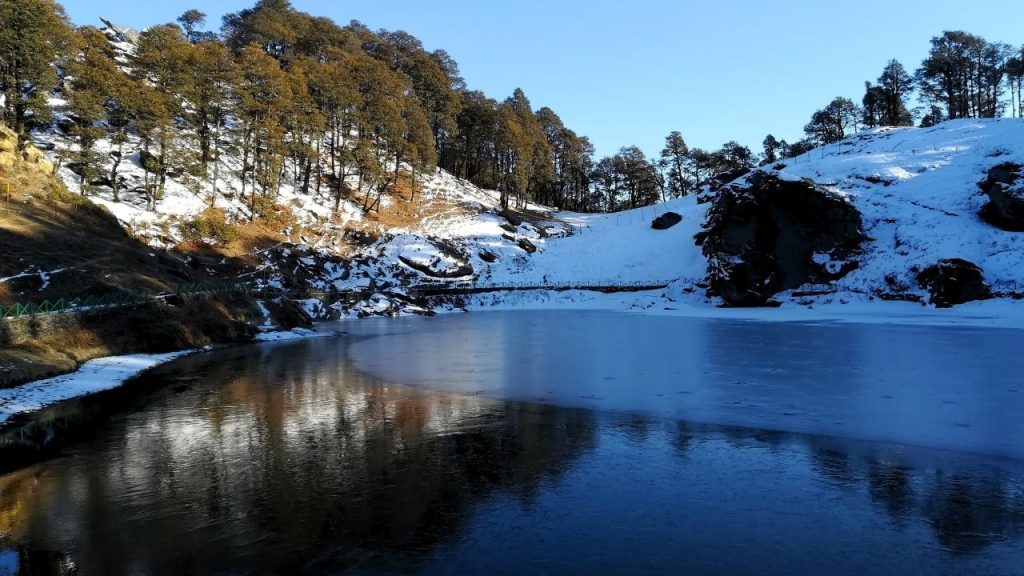
Sareolsar lake is located near Jalori Pass, 76 km from Kullu. The elevation of the lake is 3125 m, and it is about 5 km from Jalori Pass. The trek to the lake is amazing, with thickly wooded trails of fir, deodar, and pines marking the path. There is a temple of Budhi Nagin Devi, or Snake Goddess, by the lake, and devotees pay their respects by pouring a trail of ghee all around the lake.
Surajtal (4880 m & 82 km from Keylong)
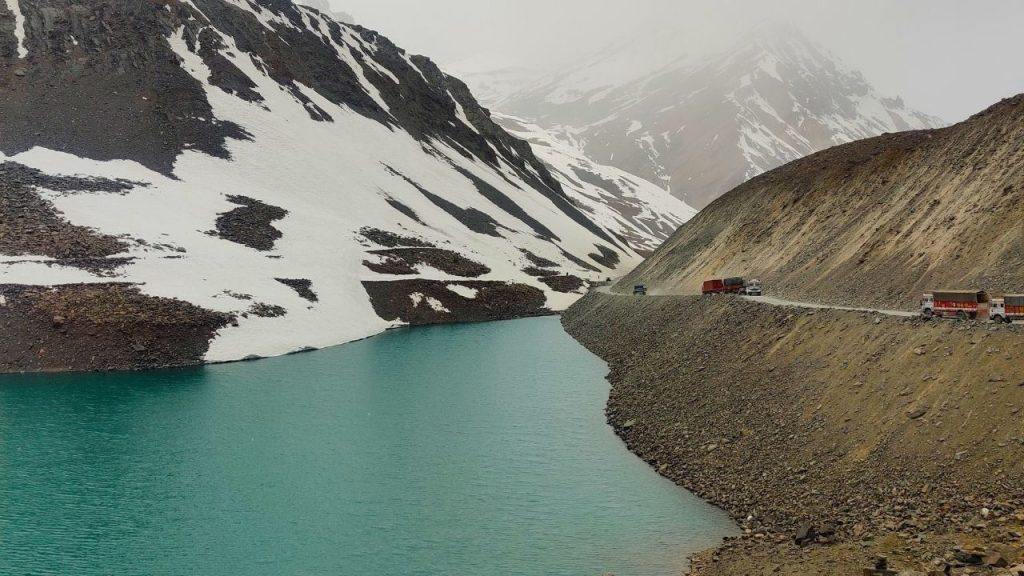
Suraj Teal, or Surya Taal, is a lake named after the Son of God and is considered sacred. At an altitude of 4950 metres, In the list of lakes in Himachal Pradesh it is the third highest lake in India at an altitude of just below the Baralacha La Pass. Overlooked by tourists in favour of the more popular Chandratal, the Suraj Taal is every bit as majestic. The lake is 65 kilometres from Keylong and is the source of the Bhaga river. The NH21, or the Leh-Manali Highway, passes by just 3 km from Baralachala The lake itself is in a very isolated location, with polar-like conditions seeing snow all year.
Tani Jubbar Lake ( 12 km from Narkanda)
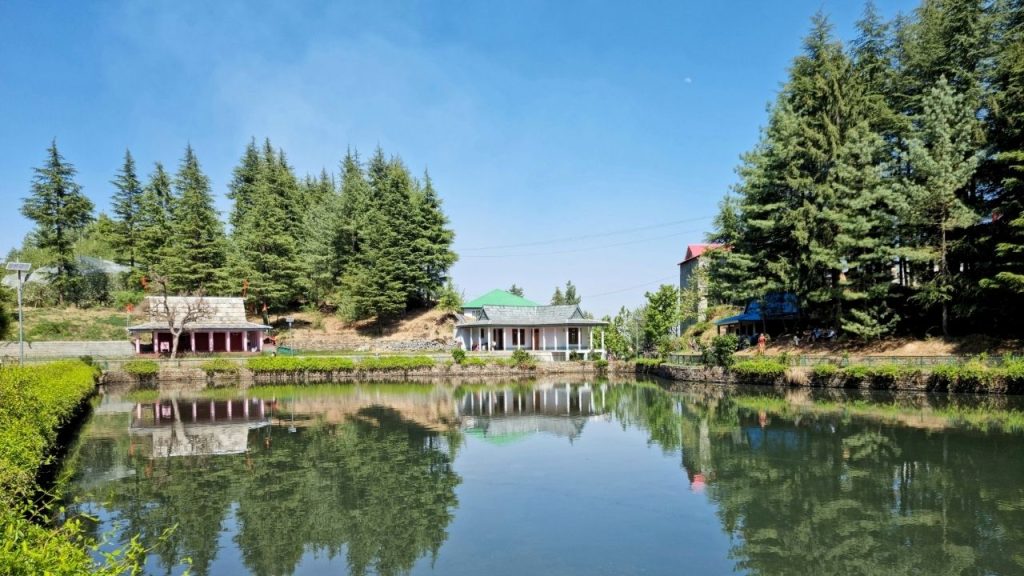
12 km from Narkanda, the Tani Jubbar Lake is towards Thanedar, Kotgarh. The artificial lake in Himchal oval lake has to be fed water to maintain its level. A paved path goes around it, and further away, the slopes around it are covered with blue pine, cedar, and spruce. You can enjoy camping around the lake. The lake is near a temple, the Nag Devta Temple, to pay their respects. The annual Tanu Jubbar fair is attended by locals and the Deity himself, and everyone turns up in their finest, most colourful traditional clothes.
F&Q’s Lakes in Himachal Pradesh
How many lakes are there in Himachal?
In total, Himachal has more than 30 lakes and reservoirs. During the summer, the majority of Himachal Pradesh’s lakes are completely full.
Which is the biggest lake in Himachal Pradesh?
Renuka Lake is located 672 metres above sea level in the Sirmaur district of Himachal Pradesh, India. With a 3214 m circumference, it is the biggest lake in Himachal Pradesh. This lake was named after the goddess Renuka. It has been a Ramsar site since November 2005.
Which is the biggest man made lake in Himachal Pradesh?
In the Indian state of Himachal Pradesh’s Una and Bilaspur districts sits the reservoir known as Gobind Sagar Lake. The Bhakra Dam created it.
Which is the smallest lake in HP?
The Pandoh Lake in Himachal Pradesh is the smallest man-made lake. Its surface is about 900 metres above sea level.


